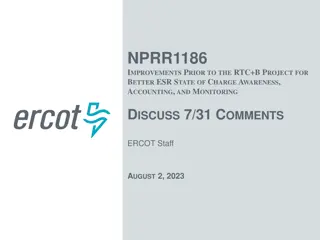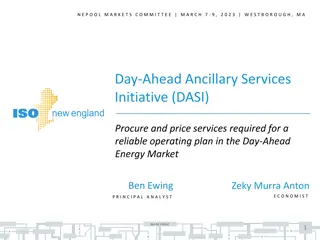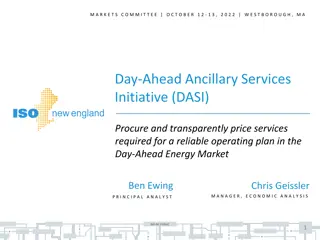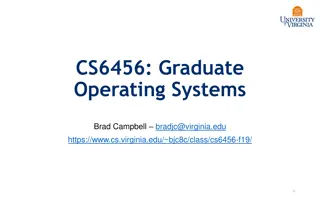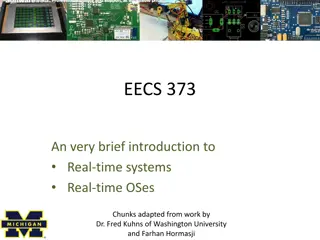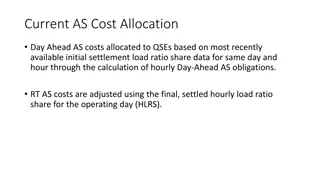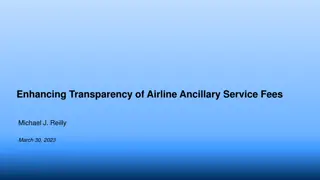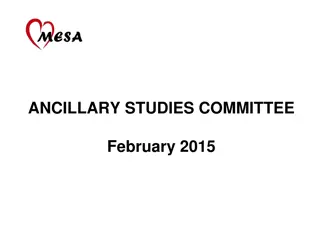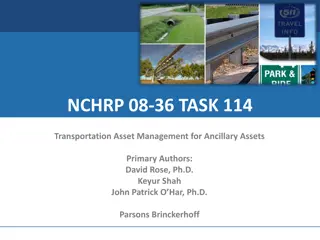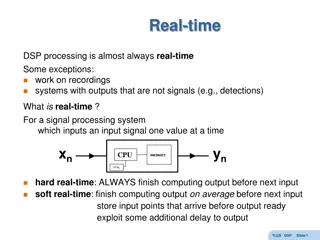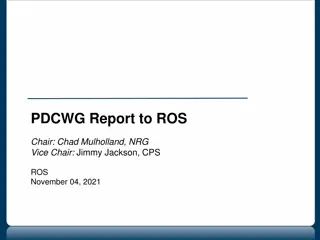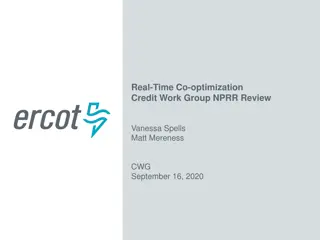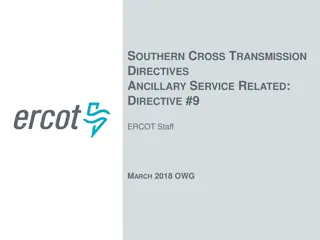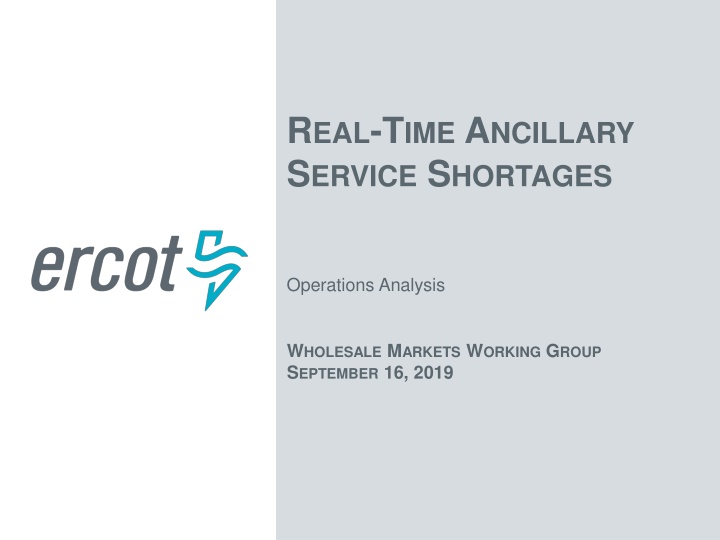
ERCOT Real-Time Ancillary Service Shortages Analysis
"Discover how ERCOT monitors and addresses real-time Ancillary Service shortages, ensuring reliability in wholesale markets. Learn about protocols and compliance criteria for managing AS capacity effectively."
Download Presentation

Please find below an Image/Link to download the presentation.
The content on the website is provided AS IS for your information and personal use only. It may not be sold, licensed, or shared on other websites without obtaining consent from the author. If you encounter any issues during the download, it is possible that the publisher has removed the file from their server.
You are allowed to download the files provided on this website for personal or commercial use, subject to the condition that they are used lawfully. All files are the property of their respective owners.
The content on the website is provided AS IS for your information and personal use only. It may not be sold, licensed, or shared on other websites without obtaining consent from the author.
E N D
Presentation Transcript
REAL-TIME ANCILLARY SERVICE SHORTAGES Operations Analysis WHOLESALE MARKETS WORKING GROUP SEPTEMBER 16, 2019
Introduction ERCOT and the Independent Market Monitor (IMM) have noticed a consistent pattern of Ancillary Service (AS) shortages in Real-Time ERCOT has improved its internal process to better track these Real- Time AS shortages for post hoc analysis ERCOT can address AS shortages prior to the end of adjustment period with the Supplemental Ancillary Service Market (SASM) mechanism During the Operating Hour in Real-Time, QSEs are expected to work with the Control Room Operators to address any AS shortages This topic was discussed at the May WMS and ROS meetings and subsequently NPRR 947 was submitted. 2 PUBLIC 2
Protocol Language 6.5.7.5 Ancillary Services Capacity Monitor 2) Each QSE shall operate Resources providing Ancillary Service capacity to meet its obligations. If a QSE experiences temporary conditions where its total obligation for providing Ancillary Service cannot be met on the QSE s Resources, then the QSE may add additional capability from other Resources that it represents. It adds that capability by changing the Resource Status and updating the Ancillary Service Schedules and Ancillary Services Resource Responsibility of the affected Resources and notifying ERCOT under Section 6.4.9.1, Evaluation and Maintenance of Ancillary Service Capacity Sufficiency. If the QSE is unable to meet its total obligations to provide committed Ancillary Services capacity, the QSE shall notify ERCOT immediately of the expected duration of the QSE s inability to meet its obligations. ERCOT shall determine whether replacement Ancillary Services will be procured to account for the QSE s shortfall according to Section 6.4.9.1. 3 PUBLIC 3
Protocol Language 8.1.1.3 Ancillary Service Capacity Compliance Criteria 1) ERCOT shall provide each QSE representing Resources a capacity summary containing as a minimum the same general information required in Section 6.5.7.5, Ancillary Services Capacity Monitor, except specific to only the QSE. The summary shall be updated with calculations every ten seconds by ERCOT and then provided to the QSE every five minutes using the MIS Certified Area. 3) The QSE, within ten minutes of receiving the insufficient capacity notification from ERCOT, the QSE must: a) If due to a telemetry issue, correct the telemetered Ancillary Services Resource Responsibility to provide sufficient capacity; or b) Must provide both appropriate justification for not satisfying their Ancillary Service Obligation and a plan to correct the shortfall that is acceptable with the ERCOT operator. ERCOT shall report non-compliance of Ancillary Service capacity requirements to the Reliability Monitor for review. ERCOT has identified a report timing issue with the QSE AS Capacity Monitor for the first interval of the hour when responsibilities are compared to the previous hour s end of adjustment period responsibilities Report fixes were implemented in mid June 2019 release. 4 PUBLIC 4
Real-Time AS Shortage Statistics Real-Time AS Shortages are calculated by averaging SCED telemetered responsibility with correct resource status codes compared to end of adjustment period AS Responsibility (which includes SASMs, AS Trades, etc.) Between April 1, 2018 and August 31, 2019: Total QSE-AS-hours short as a percentage of total QSE-AS-hours: If 2 QSEs have 2 MW of REGUP and REGDN short for 2 hours, that is 8 QSE-AS-hours (total of ~1,380,000 QSE-AS-hours) 12,934 QSE-AS-hours short by 1 MW or more (0.94%) 1,479 QSE-AS-hours short by 10 MW or more (0.11%) 5 PUBLIC 5
Real-Time Max AS Shortage Each AS type max shortage could come from a different hour in the day Surpluses within the same AS hour are not included 6 PUBLIC 6
Real-Time Max Net AS Shortage Each AS type max shortage could come from a different hour in the day Surpluses within the same AS hour are included 7 PUBLIC 7
Real-Time AS Shortage All hours are shown Surpluses within the same AS hour are not included (so only negative values are possible) 8 PUBLIC 8
Real-Time Net AS Shortage All hours are shown Surpluses within the same AS hour are included (so both positive and negative values are possible) 9 PUBLIC 9
Common Reasons for Real-Time AS Shortages Some common reasons for the AS Shortages we noticed were QSE to QSE AS trade not submitted Telemetry errors such as incorrect responsibilities Incorrectly moving AS over the top of the hour or intra-hour Outage in which QSE is unable to move AS in time SASM executed but AS can t be procured for first couple of hours Incorrect resource status codes 10 PUBLIC 10
DISCUSSION PUBLIC 11 11
Resource Status Codes for Providing AS ERCOT EMS and SCED require both correct telemetered responsibilities and resource status code to properly deploy AS in Real-Time Resource status codes per AS type: Regulation Up: ONREG, ONOSREG, ONDSRREG, ONOPTOUT, ONRGL, FRRSUP Regulation Down: ONREG, ONOSREG, ONDSRREG, ONOPTOUT, ONRGL, FRRSDN Responsive Reserve Service: ONRUC, ONREG, ON, ONDSR, ONOSREG, ONDSRREG, ONEMR, ONRR, ONOPTOUT, ONRGL, ONCLR, ONRL Non-Spin Reserve Service: ONRUC, ONREG, ON, ONDSR, ONOS, ONOSREG, ONDSRREG, ONEMR, OFFNS, OFFQS, ONOPTOUT, ONRGL, ONCLR Note: Non-Spin can be in STARTUP or SHUTDOWN when being deployed 12 PUBLIC 12

